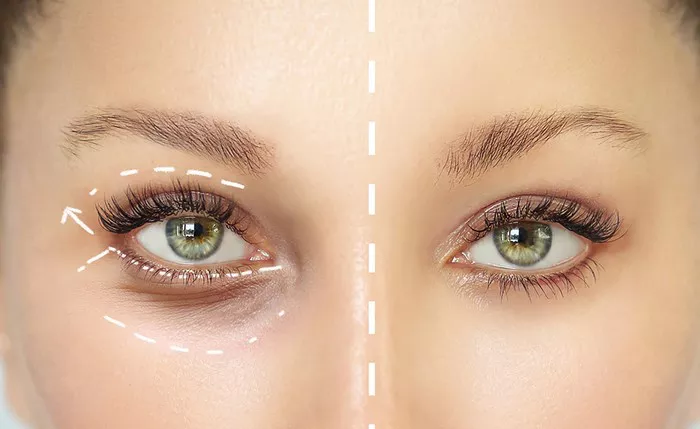Eyelid surgery, also known as blepharoplasty, is a popular cosmetic procedure that aims to address sagging eyelids, excess skin, and under-eye bags. While many individuals choose to undergo eyelid surgery for cosmetic reasons, others may have functional concerns that affect their vision and quality of life. In some cases, eyelid surgery may be deemed medically necessary, leading to the question of whether insurance coverage is possible. In this article, we will explore the factors that determine whether eyelid surgery can be covered by insurance and provide insights into the coverage criteria.
Understanding Eyelid Surgery
Eyelid surgery is a surgical procedure that involves the removal of excess skin, fat, and sometimes muscle from the upper and/or lower eyelids. It is typically performed to enhance the appearance of the eyes, reduce signs of aging, and improve peripheral vision in cases where sagging eyelids obstruct eyesight.
Cosmetic vs. Medically Necessary Eyelid Surgery
It’s important to distinguish between cosmetic and medically necessary eyelid surgery. Cosmetic eyelid surgery is performed solely for aesthetic purposes to address concerns such as drooping eyelids or under-eye bags. These procedures are generally considered elective and are not covered by insurance.
On the other hand, medically necessary eyelid surgery is performed to address functional issues that significantly impact vision and daily functioning. Conditions that may warrant medically necessary eyelid surgery include:
- Dermatochalasis: Excess skin on the upper eyelids that impairs vision.
- Ptosis: Drooping of the upper eyelids caused by weak or stretched eyelid muscles, which can obstruct vision.
- Ectropion: Outward turning of the lower eyelid, which can cause dryness, irritation, and tearing.
- Entropion: Inward turning of the lower eyelid, which can cause discomfort, redness, and irritation.
Insurance Coverage for Medically Necessary Eyelid Surgery
Coverage for medically necessary eyelid surgery varies among insurance providers and policies. The following factors are typically taken into consideration when determining coverage:
- Documentation of Functional Impairment: To establish the medical necessity of eyelid surgery, it is essential to provide evidence of functional impairment. This may include visual field tests, photographs, medical records, and documentation of symptoms such as vision obstruction, dryness, discomfort, or tearing.
- Conservative Treatment Measures: Insurance providers may require documentation of conservative treatment measures attempted before considering coverage for surgery. These measures may include the use of lubricating eye drops, artificial tears, prescription eyewear, or other non-surgical interventions.
- Specific Thresholds or Criteria: Some insurance providers may have specific coverage thresholds or criteria that must be met before approving eyelid surgery. This can include criteria such as a specific degree of visual field impairment or eyelid position.
- Pre-authorization and Prior Approval: It is important to check with your insurance provider beforehand to determine if pre-authorization or prior approval is required for eyelid surgery coverage. Failure to obtain necessary approvals may result in denial of coverage.
Navigating Insurance Coverage for Eyelid Surgery
If you believe that your eyelid surgery may qualify for insurance coverage, it’s crucial to follow these steps:
- Contact Your Insurance Provider: Reach out to your insurance provider to understand their specific coverage policies, requirements, and documentation needed for eyelid surgery. Ask about pre-authorization or prior approval processes.
- Consult with an Ophthalmologist or Oculoplastic Surgeon: Schedule a consultation with an ophthalmologist or oculoplastic surgeon who specializes in eyelid surgery. They can assess your condition, determine if your case meets the criteria for medically necessary eyelid surgery, and provide the necessary documentation for insurance coverage.
- Gather Supporting Documentation: Collect any relevant medical records, photographs, visual field test results, and documentation of symptoms to support your case for medical necessity. This information will help strengthen your insurance claim.
- Submit the Claim: Work with your surgeon’s office to submit the insurance claim, ensuring that all required documentation is included. Follow up with your insurance provider to ensure the timely processing of your claim.
Potential Out-of-Pocket Expenses
Even if your eyelid surgery is deemed medically necessary and approved for coverage, there may still be out-of-pocket expenses. These can include deductibles, co-pays, co-insurance, and any costs associated with additional procedures or aesthetic enhancements that are not considered medically necessary.
Conclusion
While cosmetic eyelid surgery is generally not covered by insurance, medically necessary eyelid surgery may qualify for coverage, depending on the insurance provider’s policies and specific criteria. It’s essential to consult with your insurance provider and an experienced ophthalmologist or oculoplastic surgeon to determine if your case meets the requirements for insurance coverage. Understanding the coverage criteria and following the necessary steps can help navigate the process and increase the likelihood of obtaining insurance coverage for medically necessary eyelid surgery.


